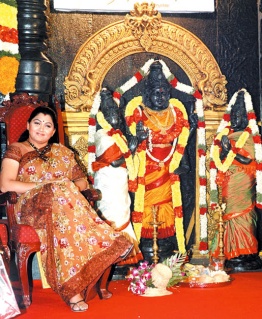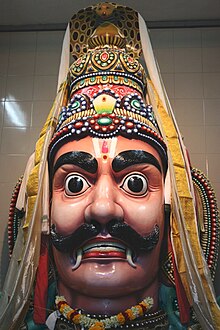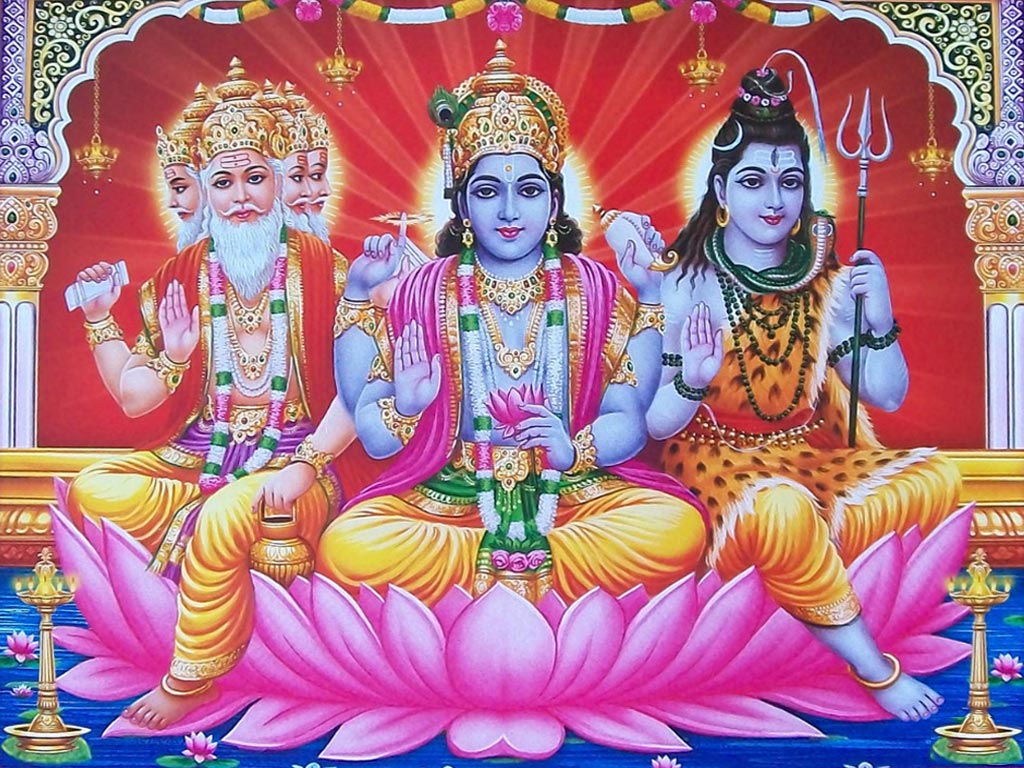prasad1
Active member

First off, there is no such thing as “Kuladeivam” (=குல தெய்வ) or “Kuladeivam worship” in Hinduism. It is an arrant superstition that has been spread by ignorant Tamil Hindus in India, and which has virally spread, especially, to Singapore and Malaysia.
Neither the four Srutis nor Upa-Vedas and Upanishads, and none of the hordes of Smritis, Puranas, Upa-Puranas, Tamil Puranas, the two Ithihaas has made any mention of “Kuladeivam” or “Kuladeivam worship”. Not even the Aimperumkappiyankaḷ, the five large narrative Tamil epics, have mentioned the practice of worshipping “Kuladeivam”.
Neither has the concept of Kuladeiva worship been mentioned by any of the 63 Nayanmars, 12 Alwars, 18 Siddars, four Santhanacharyas, four Kuravars, who are the bastions and stalwarts of Hinduism. Respected Hindu sages like Suyamprakasa Swamigal, Sadasiva Brahma, Ramalinga Swamigal, Ramana maharishi, Pampan Swami, Bothiran Swami, Kulandayanantha Swami, Ekothmma Swami, Kathirkama Swami, Thayumana Swami, Swami Sivananda (of Rishikesh), Paramahansa Yogananda, Ramakrishna Paramhamsa, Tapovan Maharaj, who appeared in the 19th and 20th centuries, did not make even an oblique reference to the existence of “kuladeiva” worship in their works and teachings.
In sum, “Kuladeivam”, as a god, deity, or devata, is not part of the Hindu pantheon, and its worship is not part of the voluminous 28 Saiva Agamas, 77 Shakta Agamas, and 108 Vaishnava Agamas (aka Pancharatra Samhitas), and innumerable Upa-Agamas.
How Kuladeiva Worship Popularised and Has Become Endemic
Kuladeiva worship is unknown in all parts of India except in Tamil Nadu, where it had its first outbreak, and soon became endemic when Tamil Nadu periodicals, which have always been known for their notoriety and vile sensationalism, misrepresented Sri Chandrasekharendra Saraswati Swamigal (aka Kanchi Periyavaal), a revered philosopher and spiritual leader who was the 68th pontiff at Kanchi Kamakoti Peetham, who had purportedly spoken about it to a poor uneducated peasant.
Latterly, owing to arrant misinformation purveyed by unenlightened media in India, and on account of uninformed people, who have been putting it about that Kuladeiva worship is part of Sanatana Dharma, a considerable number of innocent Hindus, not least the Tamils, have taken a warped and abnormal interest in the subject.
Etymology of Kuladeivam

Kuladeivam (loosely translated as “lineage deity” or “community deity”) refers to a patron deity or a tutelary, who is classed as a protector or guardian of a place, village, lineage, or even country, culture, and occupation, and who, as the Tamil folklore goes, guards and guides his votaries, generations after generations. The Tamil people call them by various names like Grama-devata (or “village deity”) or Kuladeivam (as it is referred to here in this article) “Kaval-deivam” (=” guardian spirit”). Almost every village in Tamil Nadu has more than one of these “deities”. In spite of their ubiquity, however, (as it had been proved in the foregoing paragraphs) Kuladeivams and their worship have no place in the Vedic scriptures and Agamic traditions of Hinduism. They have if we should trace their nebulous beginnings, grown more out of South Indians’ culture and customs than their having a genesis in the authoritative Vedic religion of the rishis.
Kuladeivam and Ishta-Devata are Different
The concept of what a Kuladeivam is in Tamil Nadu should not, however, be confused with the Ishta-devata worship practiced in Maharashtra, Gujarat, Kerala, Andra Pradesh, and Nepal, for instance, where certain manifestations of Vedic gods like Goddess Parvathi, Lord Shiva or Lord Vishnu, for example, are revered as the favorite forms worshiped by their ancestors.
E contra, in Tamil Nadu the Kuladeivam has nothing to do with any of the iconic gods and goddesses in the Hindu pantheon; rather they are the deified human ancestors of a clan, community, or family. [According to Kriya Tamil Dictionary (1994 edition), “KulaDeivam” refers to a “deified ancestor of a community”.]
Human Ancestors Are Kuladeivam in Tamil Nadu
To put in another way, the Tamils worship their human ancestors, who had led a virtuous or righteous life, or some elders in the lineage, olden society, gentes, confraternity, locality, neighborhood, colony, who had performed some meritorious deeds for the good of the village or community that has, as a result, flourished on that account.
In a word, what began as a mark of respect for an ancestor, as a form of reverence and deference, soon led the Tamils to deify them, giving them the status of god and even God.

Disinformation and Misinformation
Today, if one looks at Youtube, in particular, one will find (to one’s positive bafflement and dismay) an insufferable surfeit of disinformation (=false information deliberately and often covertly spread in order to influence public opinion) and misinformation (=incorrect or misleading information inadvertently sent in order to influence public opinion) concerning disreputable, un-Agamic, non-Vedic Kuladeiva worship. This has led to pernicious, damaging, and extravagant superstitions, confusing Hindus even further, taking them further from the true teachings of the Vedas, Upanishads, and Ithihaas. Many an astrologer, self-styled guru, spiritualist, religious advisor, teacher, and satsangist not only mislead people by purveying to the superstitions of the Tamils but also put around views and ideas that are completely at variance with the teachings of Hindu acharyas and the scriptures.

Indians’ Notoriety for Hyperbolic Adoration that Leads to Crass Superstitions
Indians in general and the Tamils, in particular, have earned the noxious and nauseous notoriety for deifying anyone and anything that seizes their imagination. For instance, one will (to one’s prize stupefaction and consternation) discover not one but innumerable temples dedicated and assigned to celebrities, Indian movie stars, and even politicians. Is it, therefore, a huge wonder to alight upon their worshiping their ancestors, who were in every way but mere mortals and humans like every one of us reading this article?

“Kuladeiva” Worship (=குல தெய்வ வழிபாடு) is NOT Part of Hinduism
Kuladeiva Worship is Not Part of Hinduism First off, there is no such thing as “Kuladeivam” (=குல தெய்வ) or “Kuladeivam worship” in Hinduism. It is an arrant superstition th…


